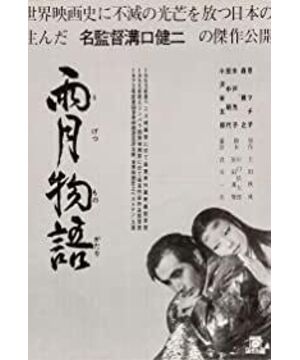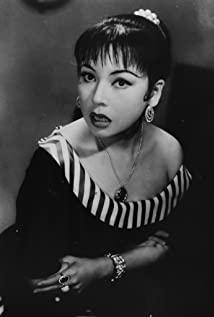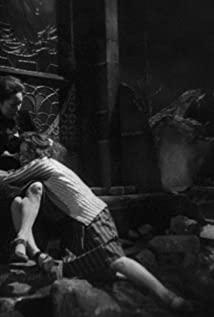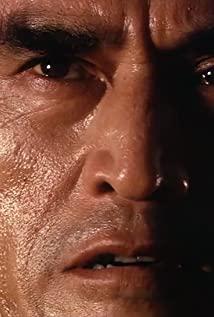In terms of themes, Kenji Mizoguchi, known as the "Master of Female Cinema", of course, his works mainly focus on Japanese women. Most of the women in his writings have a life of grievance and ups and downs, and his themes are often about how they face difficulties in a harsh objective environment, how to maintain the virtues of women in difficult situations, and even go for the sake of their family members or loved ones. Sacrifice yourself and fulfill others. For example, A-Chun from the "Xihe Generation" has met countless men in her life, some who love her deeply, some who are greedy for her beauty, some who take advantage of her, and even her father uses her as a tool to make money, selling her to Brothel as a geisha. In short, her whole life was at the mercy of men, but she did not forget the principles and dignity of women because of these experiences. In addition, in "Story of the Rainy Moon", the wives of the two male protagonists sacrificed themselves because of their husband's desire, one became a prostitute, and the other was killed by a samurai. The ghost of the slain wife still protected her son at home, waiting for the return of her husband, and finally let her wait until that day. The theme he wanted to show was the feudal society, how war and men made Japanese women feel wronged and wronged, but their unyielding spirit to support them.
In Kurosawa's films, women are rarely portrayed. The women in his works are different from those depicted by Mizoguchi. The women in his works are a bit more human. For example, in "Rashomon", the samurai's wife actually hopes that the robber who raped her will kill her husband. This kind of female description is rarely seen in Mizoguchi's works. And this dark side and weakness of human nature is exactly what Kurosawa likes, such as "Heaven and Hell". The theme discussed in the film is how a person decides on money and morality. The protagonist of the play Toshiro Mifune was initially willing to give up his chance to become a business owner for his kidnapped son, in exchange for 30 million yen for his son's safety. When he knew that it was his driver's son who was kidnapped, he began to fight, and people's selfishness began to appear, because after all, he was someone else's son. In "Rashomon", the weakness and lies of human nature run through the whole story. Each character in the story hides part of the truth because of his own reputation and safety, so everyone has a different version of the confession, and in the end no one knows the truth Exactly how. In addition, in "Seven Heroes and Four Righteousness", the weakness of the samurai is also described. For example, the young Katsushiro developed a bad relationship with a woman from a peasant because he could not control his desires. The people in his writings are not perfect, they all have their own weaknesses. The only difference is that some people will actively seek changes and become more sentimental people, while some people will betray their principles because of selfish desires, as in "Spider Nest City" The samurai murdered the lord for selfish desires, and was finally executed. In the eyes of Akira Kurosawa, a samurai who violated the spirit of Bushido will never end well. On the contrary, a fake samurai can be respected and become a real samurai if he acts in the spirit of Bushido. For example, Kikuchiyo in "Seven Heroes and Four Righteousness" is a true warrior pretending to be a samurai
. He is the son of a peasant, but he is resourceful, brave and good at fighting, and he is even better than a real samurai, so he is enough to be a A samurai, so Katsushiro stuck a sword in his grave according to the way of a samurai. This is precisely the Bushido spirit that Kurosawa Akira often advocates in his works. As long as you have a samurai-like sentiment, no matter how humble your background is, you can become an out-and-out samurai.
Mizoguchi's films do not have Kurosawa Akira's Bushido, and Mizoguchi's eyes are not very positive, such as the samurai who raped the protagonist's wife in "Uzumaki Monogatari" and the samurai who killed another protagonist's wife. Bushido in his eyes is a spirit that does not exist and has declined. Instead, there is a strong awareness of Buddhism and Confucianism in his works. Taking "Doctor Sansho" as an example, the small Buddha statue (the one his father passed down to Chef Wang) that appears in the film has an important meaning throughout the film. This small Buddha statue represents the father who passed on his compassionate heart to his son, the cook, the king. When the son forgot the importance of this kindness, the son threw it away and his sister picked it up. When the son regained that kind heart, he Revisit the little Buddha again. After that, the Buddha statue got the help of the doctor and made his mother recognize him. All good things are accomplished by this Buddha image. In addition, A Chun, who is a "girl of the Western Crane generation", also entered Buddhism in his later years and had to take charge of his own life, and no longer allowed others to control his destiny. And Genjuro, one of the protagonists of "Uyuki Monogatari", who was fascinated by ghosts, was also awakened by the help of the monk. All of them were born from Verde, which just shows that their works are permeated with Buddhist thought. And Confucianism appears in "Story of the Rainy Moon", because the idea of "being poor and enjoying the Tao, contentment and happiness" is one of the centers of the whole film. Therefore, Buddhism and Confucianism are also one of the most representative themes of Mizoguchi. The works of the two directors have their own characteristics in terms of themes. The same thing is that they both mainly express the spirit of oriental culture, but Akira Kurosawa has more westernized ideas, such as humanism. Mizoguchi, on the other hand, focuses on promoting traditional oriental culture, theory and spirit, and even art (such as Noh).
In terms of aesthetics, the two men have different standards and policies. Akira Kurosawa pursues the tension and contradiction of drama, while Mizoguchi focuses on artistic conception and realism. So the two are very different in camera, storyboard, editing and soundtrack. Akira Kurosawa likes to use a lot of very short shots to explain a scene. For example, in the scene where the woodcutter enters the forest in "Rashomon", there is nothing special about the plot. It's just that the woodcutter slowly walks into the forest alone, so 16 different shots are used. Assembled, with shots of different sizes, the quick cuts make this simple clip dazzling. In the final battle of "Seven Heroes and Four Righteousness", for the first time, multiple cameras were used to shoot at the same time to capture the mighty battle, the bravery of the samurai and the conflict of characters. And make good use of close-up, with rhythmic editing, the shot is powerfully cut into a dramatic battle.
Although Mizoguchi's film doesn't have many close-ups and quick cuts, it still enhances the effect with its unique long-take style. Mizoguchi has always liked to shoot with "one scene and one mirror". Although there is only one shot, it is still full of appeal. For example, in "Uzuki Monogatari", it tells what happened to Genjuro's wife and son when they were in distress. The camera first saw the wife and son on the road, then saw the thief entering the camera to grab the food, and then another person entered the camera with a spear and stabbed the wife, the wife fell to the ground, the thief left, the camera shot up, the wife insisted on the road, and See the thieves in the background to share the robbed food. In this scene, there is no close-up of the stabbed, nor the close-up of the wife's pain, but it is still powerful. In the last shot, the wife is in the foreground, and the thief is sharing the food in the background. This combination clearly describes the wife's terrible experience. and helpless. And ending with a panoramic mirror not only strengthens the insignificance of people, but also enhances their sense of reality, the audience is like a bystander watching the tragedy with a cold eye. In addition to being contagious, his long shots also break the old principle of strictly adhering to the unity of narrative space, because his long shots often change in space. Taking "Story of the Rainy Moon" as an example, in the film, Genjurou returned to Hibiki to find his wife and son, but only one shot was used in that scene. The camera is inside the house, and seeing Genjuro entering the house, no one is very desolate in the house, he goes to the backyard to continue looking, while the camera sees him from the two windows in a circle outside and back to the opening door. It was brighter than before because his wife was cooking in front of the stove. This scene is actually a combination of reality and illusion. The space is different, but it was shot with a long lens. Someone pointed out that this shot was shot twice, but I can't see the flaw. All in all, he wanted to use a long shot to shoot this scene from reality into illusion. Furthermore, Mizoguchi also infuses the elements of traditional Japanese silk scroll painting into the film and appears in his long takes. For example, when photographing a large yard, it is shot with a lateral-shifting lens, and events are happening after passing through a room, unfolding slowly like a silk scroll painting. Every time the camera moves, it will be driven by the actor. Whenever the actor approaches the camera, the camera will move back, so that the actor will not occupy the scene. This is indeed more natural and very rich, and Mizoguchi constantly arranges actors to appear in the camera, so that new things appear on the camera.
Akira Kurosawa also makes good use of the actor's movement, but the difference from Mizoguchi is that Akira Kurosawa will place the actor closer to the camera, allowing him to occupy the approximate part of the picture to highlight his expression and drama. He also makes good use of the width of the screen, placing characters with conflicting positions on both sides of the screen, reducing the intimacy between them and turning them into a state of opposition. These techniques are used to the fullest in Heaven and Hell. In addition, Akira Kurosawa is also good at using different shooting techniques to highlight the character of the character. For example, Tajomaru of "Rashomon" will use dynamic lenses to highlight the vitality, enthusiasm and arrogance of Tajomaru when narrating. When the woodcutter narrates, he uses a more objective three-person lens and panoramic lens to shoot, because he is not the party involved, in order to highlight its objective authenticity.
In fact, the two film masters have many similarities and differences. One is firm and one is soft, one is fast and one is slow. The language and technique of the film have a great influence on later generations. If you want to know more about Japanese culture and films, you must first know their films.
View more about Ugetsu reviews










